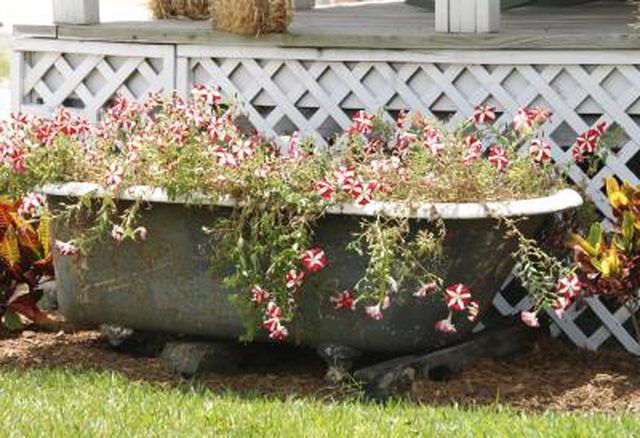Bulbs
Flower Basics
Flower Beds & Specialty Gardens
Flower Garden
Garden Furniture
Garden Gnomes
Garden Seeds
Garden Sheds
Garden Statues
Garden Tools & Supplies
Gardening Basics
Green & Organic
Groundcovers & Vines
Growing Annuals
Growing Basil
Growing Beans
Growing Berries
Growing Blueberries
Growing Cactus
Growing Corn
Growing Cotton
Growing Edibles
Growing Flowers
Growing Garlic
Growing Grapes
Growing Grass
Growing Herbs
Growing Jasmine
Growing Mint
Growing Mushrooms
Orchids
Growing Peanuts
Growing Perennials
Growing Plants
Growing Rosemary
Growing Roses
Growing Strawberries
Growing Sunflowers
Growing Thyme
Growing Tomatoes
Growing Tulips
Growing Vegetables
Herb Basics
Herb Garden
Indoor Growing
Landscaping Basics
Landscaping Patios
Landscaping Plants
Landscaping Shrubs
Landscaping Trees
Landscaping Walks & Pathways
Lawn Basics
Lawn Maintenance
Lawn Mowers
Lawn Ornaments
Lawn Planting
Lawn Tools
Outdoor Growing
Overall Landscape Planning
Pests, Weeds & Problems
Plant Basics
Rock Garden
Rose Garden
Shrubs
Soil
Specialty Gardens
Trees
Vegetable Garden
Yard Maintenance
How to Create a Container Garden Out of a Bathtub
How to Create a Container Garden Out of a Bathtub. A vintage bathtub salvaged from a remodel can take on a new life outdoors as a quirky container garden. This style container garden works especially well with country- or cottage-style houses and gardens when the plants appear to have taken over the tub naturally. Imperfections, such as rust and...

A vintage bathtub salvaged from a remodel can take on a new life outdoors as a quirky container garden. This style container garden works especially well with country- or cottage-style houses and gardens when the plants appear to have taken over the tub naturally. Imperfections, such as rust and chipped enamel, add to the charm of the garden. Use the bathtub garden as a focal point beside a patio or near a pond or fountain water feature.
Choosing a Spot
If you already know which plants you want to grow, select a site for the bathtub garden based on the sun requirements for those plants. If you have a particular spot in mind for the bathtub garden, the plants you choose must be suitable for the available sunlight in that space. A spot that receives six or more hours of direct sun is considered a full-sun area, which would be suitable for plants such as garden verbena (Verbena ? hybrida), angelonia (Angelonia angustifolia) or feather celosia (Celosia argentea var. cristata). Verbena grows in U.S. Department of Agriculture plant hardiness zones 9 through 10; angelonia grows in USDA zones 9 through 11; and feather celosia grows in USDA zones 10 through 11. All can be grown as annuals, too.
Heavy Load
Antique bathtubs are usually made of cast iron which makes them heavy and difficult to move even without the added weight of soil, plants and mulch. It is much easier to set the empty bathtub in place before filling it with soil and plants. Clawfoot bathtubs can be set directly in the garden because the drain hole is elevated. Put bricks underneath its feet so it doesn't sink in if you're resting it on soil. You'll need to build a platform or cradle for bathtubs without feet to keep the drain hole from resting directly on the ground, unable to drain properly. Lay landscaping timbers or blocks in a rectangular pattern with an opening just large enough to cradle the tub, suspending the drain above ground. The timber or block structure serves as edging around the bathtub garden.
Proper Plumbing
All container gardens need at least one drainage hole so water can escape. Otherwise, the plants might suffer from root rot and other diseases. Bathtubs have built-in drains, which saves you some work. Some bathtub bottoms are built with a slight slope so water flows toward the drain, but you might have to place blocks under one end if the bottom of your tub is completely flat. Additional drain holes might be necessary if the plants do best in slightly dry soil -- drill one or two more holes through the bottom of the tub with a power drill and high-speed metal drill bit, or the appropriate bit for the tub's material. Cover the drain hole with a piece of wire mesh screen to prevent soil from washing through. Add a 2-inch layer of gravel at the bottom of the bathtub to ensure your plants won't sit in waterlogged soil.
Fill It Up
Instead of wasting money on potting soil that won't be used by plants with shallow root systems, add a filler material, such as rocks, empty soda bottles or foam packing peanuts, to fill in the extra space in the bottom of the tub. Most annual flowers, for example only need about 4 inches of soil for their shallow root systems. For an annual container garden in an 18-inch-deep tub, add up to 12 inches of filler material, leaving 4 inches for soil and another 2 inches for a mulch layer. Add a layer of landscaping fabric on top of the filler to keep the potting soil in place. Use well-draining potting soil rich in organic matter, or blend your own with equal parts peat moss, finished compost and perlite. Plant the flowers in order of descending height so you can see all plants. Taller plants should go in the center of the bathtub when the garden is visible from all sides, or in the back when visible from only one side.